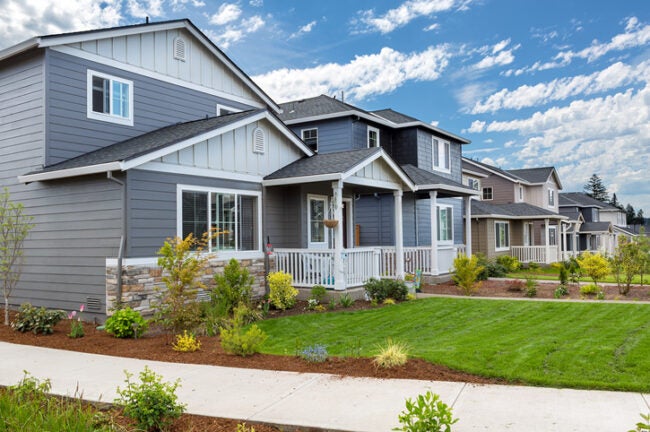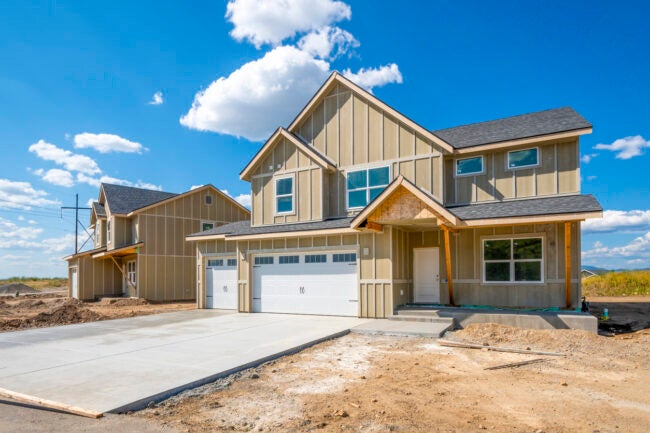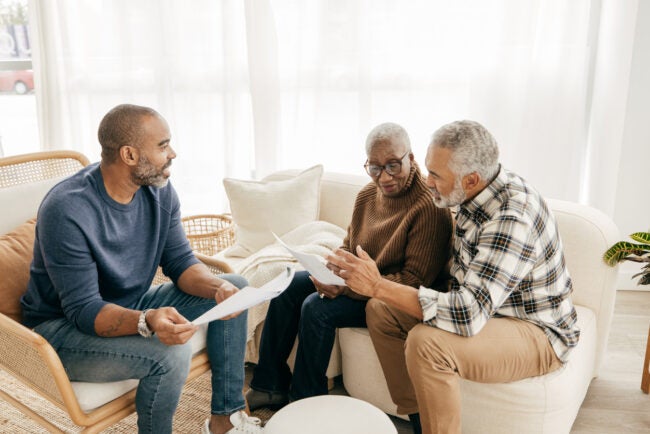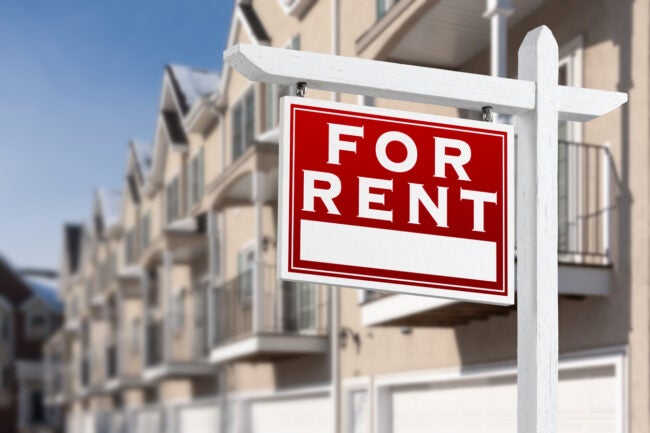In recent years, especially in states with warmer climates, the development of master-planned communities has seen a rise in popularity. However, if you are thinking about moving into one, you should be aware that there are negatives to living in one in addition to the benefits.

If you prefer the notion of living within a town that is self-contained, if you like the idea of seeing the same sorts of houses in your neighborhood, and if you like the idea of having convenient amenities, then you will probably appreciate living in a master-planned community (MPC).
New towns or green towns are common names for these sprawling mixed-use complexes that might include thousands of dwelling units and are sometimes referred to as new towns. The homeowner's association costs are included, and there may also be gated entryways. They frequently cater to communities with residents aged 55 and older and offer everything in one convenient place, including a fitness center, a swimming pool, tennis courts, parks, a grocery store, restaurants, a golf course, and even neighborhood schools. MPCs are not for everyone, despite the fact that they make day-to-day living more convenient while also offering a sense of security and familiarity. We are going to discuss the benefits, drawbacks, and potential of MPCs all around the United States.
1. There is nothing further away, and there is no traffic.

One of the most significant benefits of residing in an MPC is the decreased amount of driving that is required to accomplish daily errands. Because places like supermarkets, schools, and fitness centers are only a few minutes away, there is no need to waste time sitting in traffic on the highways, which enables you to have more time to do the things that are important to you. When you have an MPC, you will spend less money on things like petrol and parking.
2. People are drawn to the sunbelt states because of the abundance of green spaces.

Getting out of the city and into the suburbs is typically required in order for city dwellers to experience nature and wildlife. On the other hand, the vast majority of MPCs feature miles upon miles of natural paths. In point of fact, one of the benefits of MPCs is that they are created with an active lifestyle in mind, which is one of the reasons why they are so popular. Because conveniences have been purposefully placed in the immediate vicinity, there are no longer any valid reasons not to go outside and take a stroll. It should come as no surprise that many MPCs are created in states in the Sun Belt because these are the states where outdoor living is one of the primary draws. MPCs have become increasingly desirable as a result of the migration that took place during and after the epidemic to states that are warmer and have lower tax rates, particularly among retirees and people who work remotely. The availability of large expanses of land around cities is a big pull for developers, and it is believed that as much as half of the current population of the United States now lives in states that are located in the Sun Belt.
3. Retirees are attracted to living in communities for a variety of reasons.

Living in the company of a close-knit group of friends can be a significant lure for retirees. One of the major selling points of a manufactured home community is the ability to finally let go of the chaos after years of commuting, working, and raising a family. It's a fad that doesn't appear to be going away any time soon. It is anticipated that 75 million baby boomers will reach retirement age by the year 2030, and every single day 10,000 persons who were born between 1946 and 1964 would reach that age. The impacts of the pandemic sped up the rate at which baby boomers left the workforce, with 30 million retiring in the third quarter of 2020, and those numbers continue to rise steadily.
4. The price of MPCs might be out of reach for some people.

According to estimates provided by Realtor.com, the United States is now suffering from a shortage of approximately 6.5 million homes. Because there are fewer homes on the market, housing prices have increased. However, the supply of MPCs continues to increase, but the homes in these brand-new communities come with a high price tag that puts them out of reach for many people who are considering becoming homeowners, especially as interest rates continue to rise. MPCs make excellent sense for younger, remote employees who can afford the charge, but they could be financially prohibitive for retirees or other individuals on a fixed income, unless they can buy in cash or put down a substantial down payment and still have enough money to take care of the HOA costs. MPCs make ideal sense for younger, remote workers who can afford the expense.
Nara Townhouses At #Thevalley is the next addition to the master-planned community of The Valley. Live in a place where you can escape the city.
— Edge Realty (@edgerealtydubai) August 3, 2021
Pre-Register Now:
☎️ +971585602665
📧 [email protected]
🌐 https://t.co/oGd6BBGIPY
PN: 1772585569#emaar pic.twitter.com/o8yXbo0bzT
5. A lifestyle that is universally applicable to all people is not for everyone.

Some people do not want to live in generic houses that are located far from the city centers and the neighborhoods in which they spent their childhoods. Others seek the flexibility that comes with being able to rent out their property on Airbnb when they go on vacation or with the option of living with extended family members. For whatever reason, a multipurpose center (MPC) reflects a standardized way of life that may give some people the impression that they are stuck in the movie "Groundhog Day," in which each day is the same as the one before it. Purchasing a membership in an MPC can also restrict your possibilities. If one of your goals for retirement is to see the world or maybe spend some time living in another country, it may be difficult to save enough money to fulfill this goal while also meeting the monthly financial obligations linked with your MPC. Additionally, many communities have stringent HOA restrictions that make it illegal to lease your home while you are away. This prevents you from having a viable source of income and ties you to the place.
6. It could take years for your MPC to develop to its full potential.

When selling a home in a master-planned community (MPC), developers frequently provide early purchasers with alluring financial incentives. These may include a decrease in the preconstruction costs, the completion of the basement, an additional number of hardwood floors, or an increase in square footage. However, there are potential negatives associated with being one of the first inhabitants in a town that may take years to develop completely.
- You are going to have to get used to living in close proximity to building sites.
- It is possible that the construction of amenities and retail centers will be put on hold if it takes the development some time to sell all of its units or if the builder experiences financial difficulties.
- It is unlikely that friends and relatives will make the effort to go to see you if you live in an isolated property in the midst of active construction, so you will need to drive to see them.
7. Heirs are not interested in purchasing MPCs.

The fact that individual homes in master-planned communities typically only last through one generation is one of the downsides of these types of neighborhoods. In most cases, heirs are not thrilled about inheriting a property in a manufactured or park home community (MPC), particularly if it is located in a neighborhood restricted to residents aged 55 and over. However, they may be thrilled about receiving a city apartment or a roomy home in the suburbs. There is also a disadvantage associated with selling a property in a community that contains thousands of other properties that are comparable to yours. To begin, the possibility exists that the presence of other houses in the development will make it more difficult for you to sell yours. In addition, if there are other, more recent MPCs in the area, prospective buyers might be more drawn to those more recent projects, despite the fact that the prices might be higher.
A Step-by-Step Guide on What to Do After Inheriting a House is Linked Here for Your Convenience
8. When it comes to the most popular master-planned communities, Florida is in first place.

It is not hard to understand why Florida is at the top of the list of states with the most popular master-planned communities given that the state offers residents access to a tropical environment, beaches, and airports. However, despite the state's undeniable appeal, there are also a number of substantial negatives to living there. The impact that Hurricane Ian had on Florida's reputation as a location to kick back, relax, and live the vacation lifestyle was significant last year. According to real estate data compiled by Costar Group, the hurricane caused catastrophic damage to southwest Florida, resulting in the destruction of 5,000 properties and the damage of another 30,000. Additionally, it required a great number of homeowners to look for short-term housing.
In recent years, there has been extraordinary economic development and a concomitant rise in prices, particularly for newly built homes. In addition, homeowners and investors may have second thoughts about purchasing as a result of the higher cost of insurance as a direct result of the catastrophe. In addition, the repercussions of climate change, such as tornadoes, hurricanes, wildfires, and searing heat, could persuade many individuals living in the Sun Belt to rethink their decision to reside there permanently.
9. An increase in interest rates could make MPCs unaffordable for many people.

As a result of rising loan rates, many purchasers are delaying their purchase decisions, which is causing multiple-family home builders to halt building for the time being. This has two instant consequences at the same time. To begin, the development of some communities is taking longer than expected, which means that people who are already living in their houses will have to continue to be surrounded by construction for a longer period of time than they had planned. Second, would-be buyers are forced to remain either in the rental market or in their own houses, which contributes to the limited supply of available properties in the market.
10. Renters might also live in areas that have been master-planned.

One of the most recent developments in the multi-family housing market is the construction of multi-family properties specifically for rental purposes. In these communities, builders also take on the role of property managers and landlords. This arrangement allows landlords to plan for the long-term future of their communities and provides renters with the flexibility to move on short notice. Landlords are also able to factor in greater amenities and upgrades when calculating their income and operating expenses as a result of this arrangement.
11. Mixed-income multi-family communities (MPCs) contribute to both diversity and affordability.

MPCs are well-known for primarily catering to seniors who come from the wealthy middle class. However, because there is a lack of homes and an increase in labor that may be done remotely, the market is now open to families and households with varying incomes. As a consequence of this, there is now a broader variety of housing kinds available within the same community. These housing types include single-family homes, townhouses, and condominiums. This pattern is likely to continue because the IRS is providing various tax breaks and incentives.

